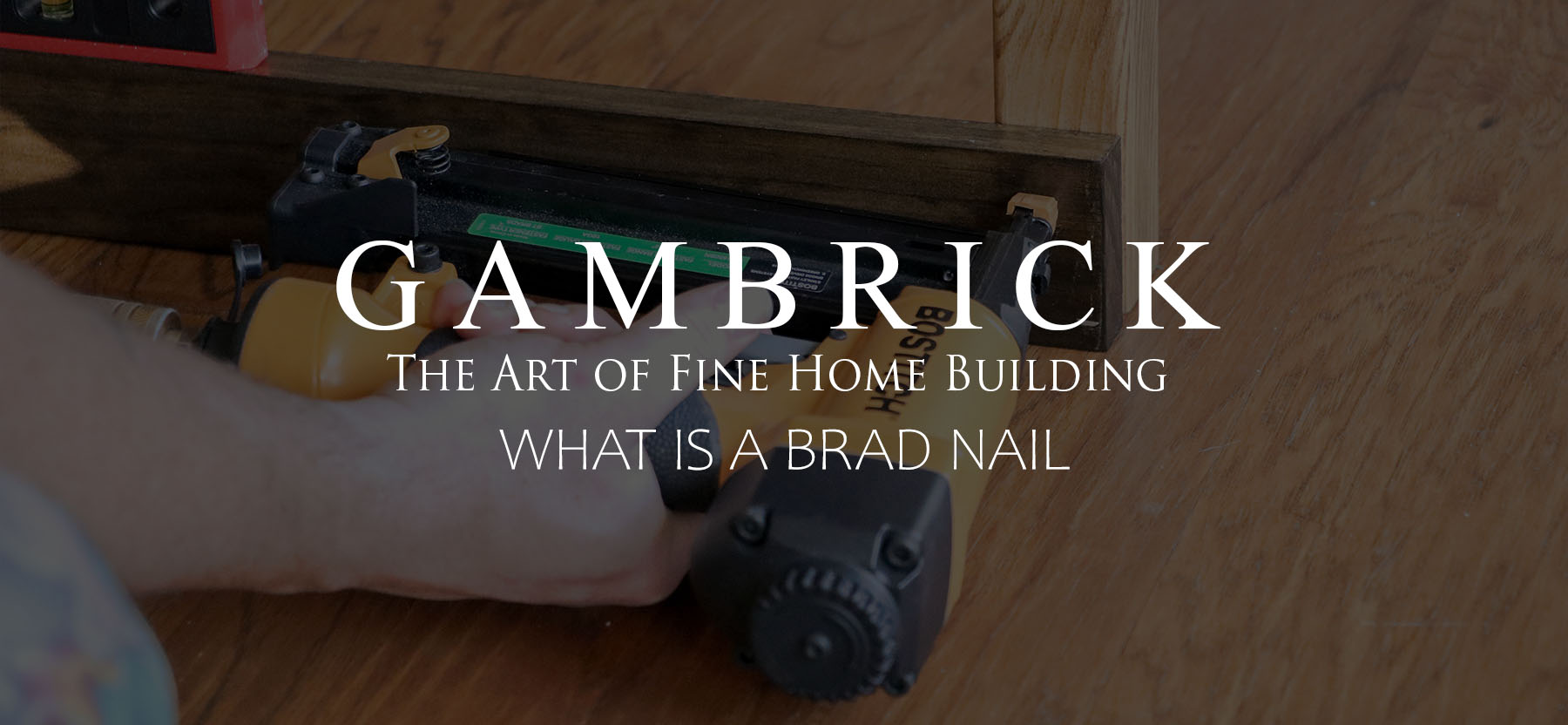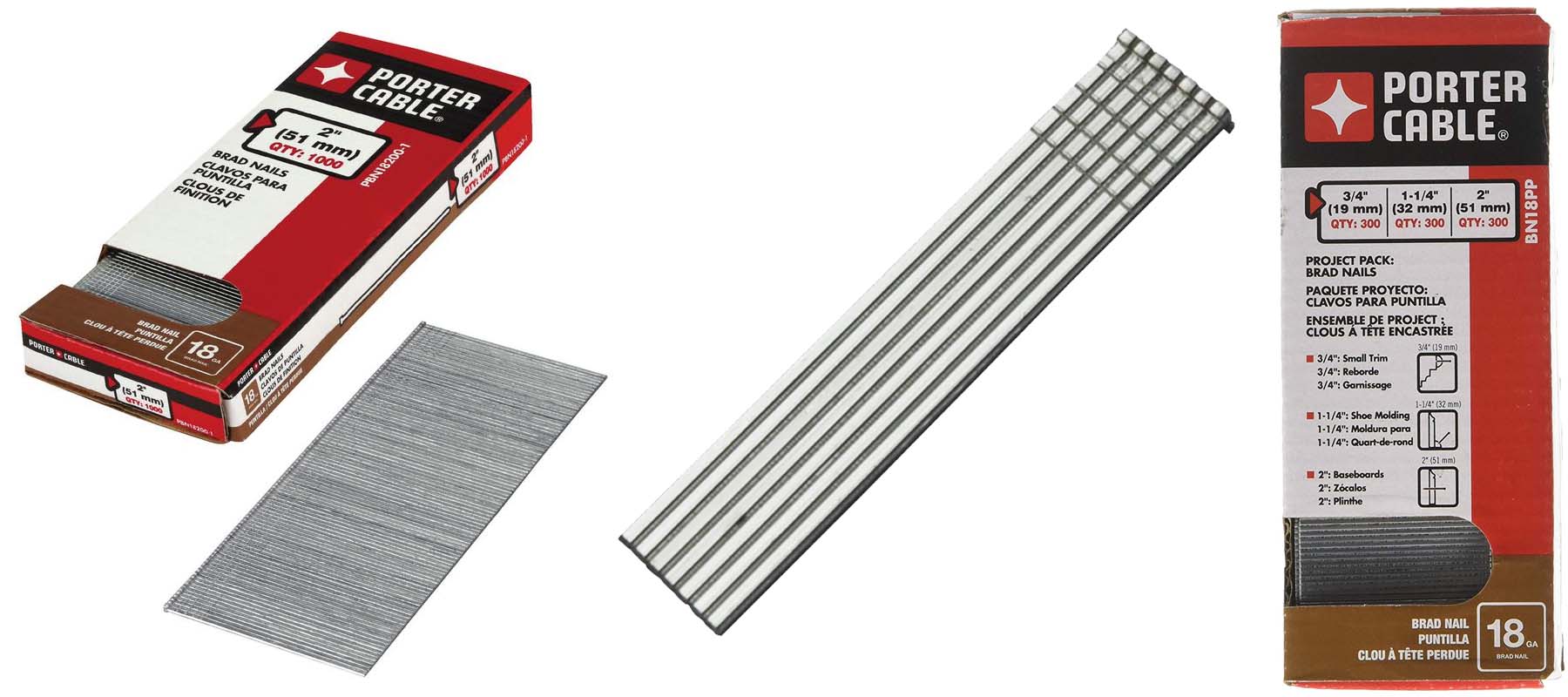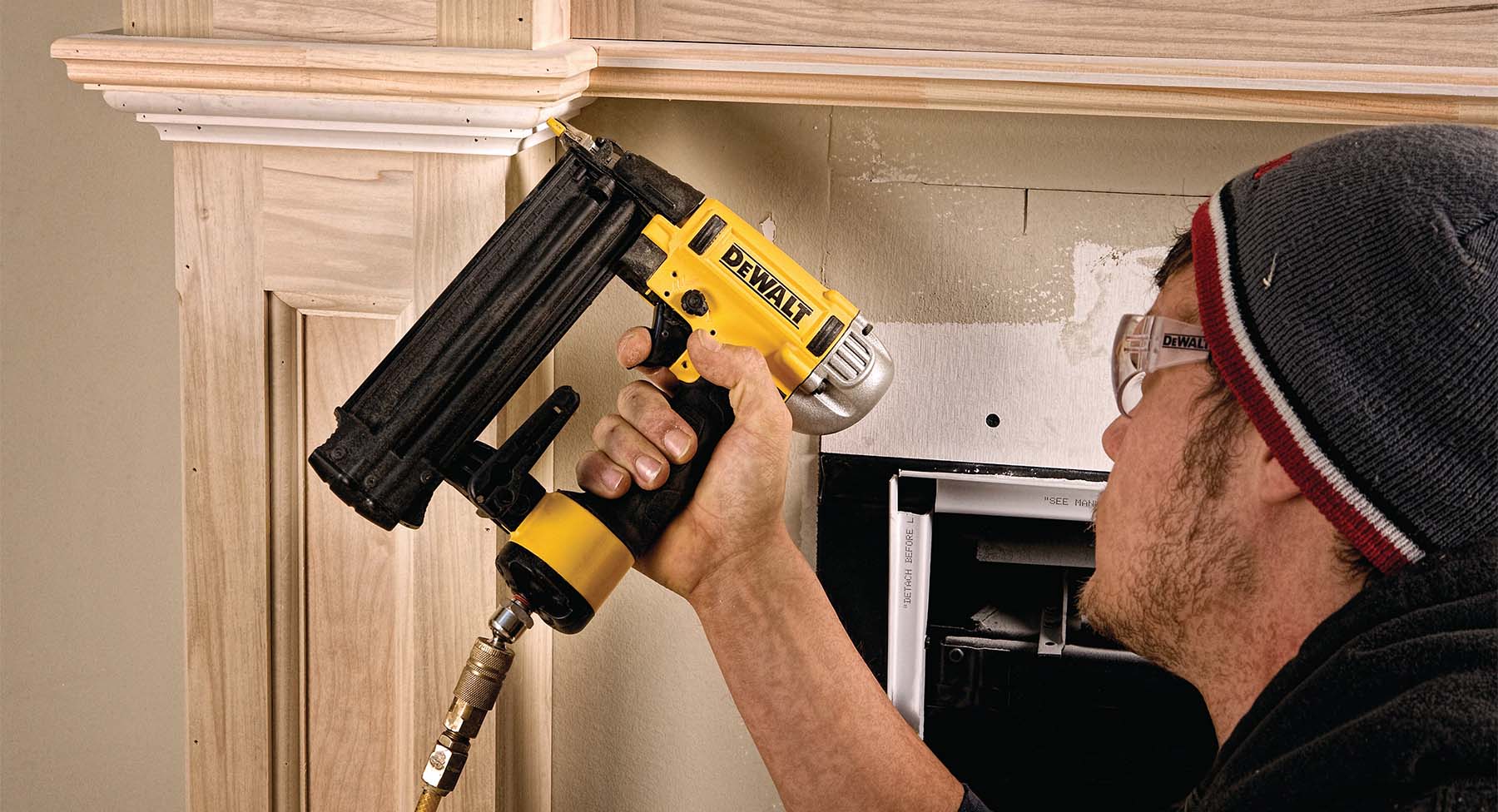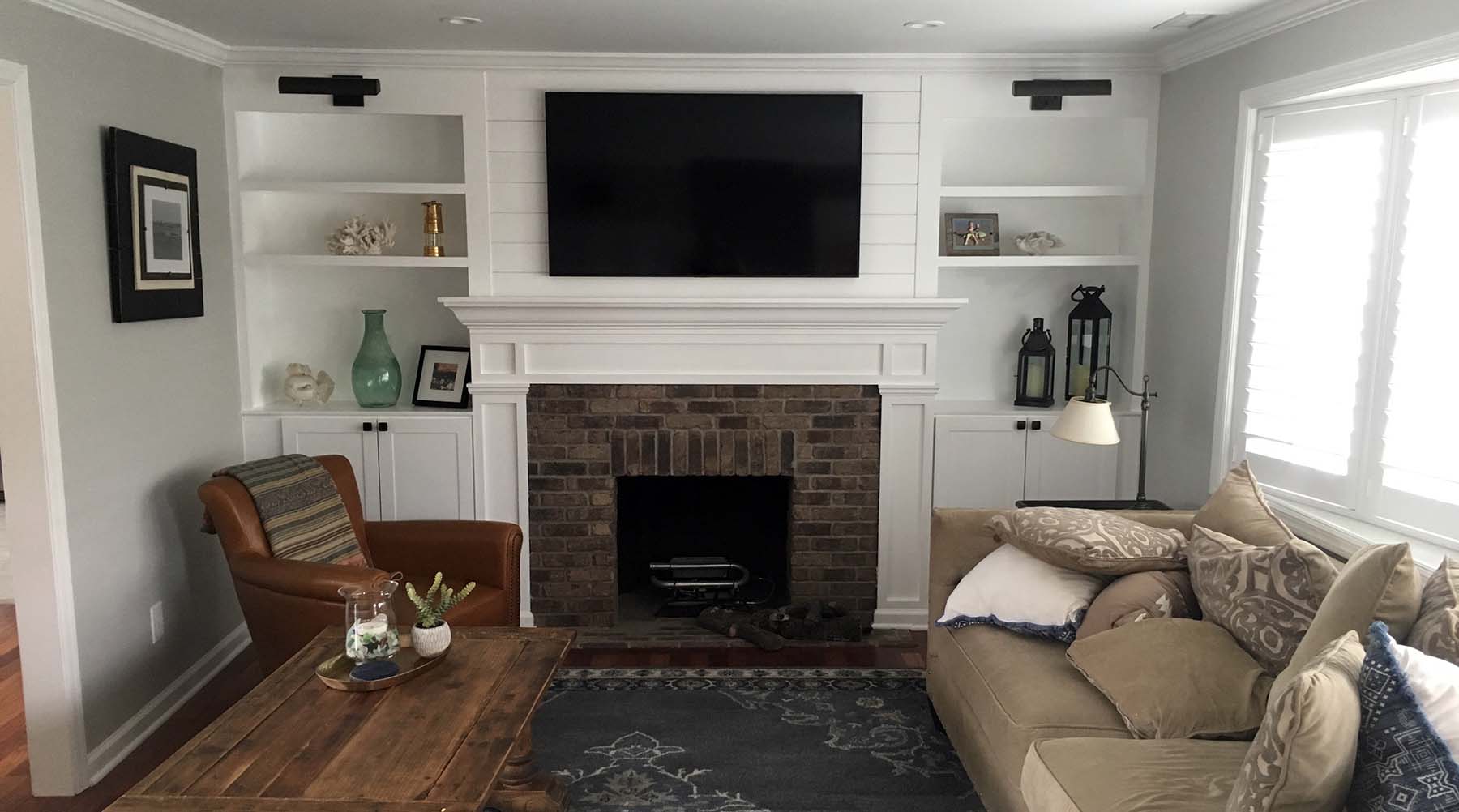What Is A Brad Nail?
Walk into any Home Depot hardware aisle and you’ll find a wide variety of nails. Dozens of types all with their own unique name and purpose. Picking the right nail for your project can be quite confusing even for people working within the construction industry. Nails are used for everything from framing huge structural beams to fastening delicate craft projects. They come in multiple lengths, sizes, shapes and are made of different materials and finishes. Before you start shopping, you need to know the difference between each nail and which type you need. Each kind of nail is made to complete a specific job, and the brad nail is no exception. So what is a brad nail? What are brad nails used for? And what’s the difference between a brad nail and a finish nail? All these questions and more will be answered in the post ahead.
Brad nails are very small and very thin. One of the smallest nails you can buy in fact. Sometimes referred to as a wire nail. Brad nails have very small, flat heads, and can be hand driven with a tack hammer, but are generally shot in with a nail gun called a Brad Nailer. These nailers come in either pneumatic or electric varieties. Both types of Brad Nailers and Brad Nails are readily available at just about every hardware store. Brad nails come in varying lengths, from 5/8-inch to 2 1/4-inch, and closely resemble finish nails. They’re made from 18 gauge wire with a 1.22 mm diameter. They so closely resemble finish nails that most people can’t tell he two apart. However, once you know the difference, Brad Nails are easy to spot because they’re so tiny.
Whats A Brad Nail
Those tiny nails shown in the pictures above are brad nails. They come boxed in varying quantities. The 18 gauge 2 inch are what we generally use for delicate trim work like installing show molding. When your doing trim work try to match the size of the wood to the nail you use. For really small pieces of trim, use a really small nail. Brad nails are best for the really small, delicate stuff. As your trim gets bigger, use a thicker, longer nail. Move up to a finish nail and so on. You wouldn’t want to use brad nails on trim that’s too thick or heavy because they won’t hold well.
Whats The Difference Between A Brad Nail And A Finish Nail
The difference between brad nails and finish nails is the gauge of the wire they’re made from. Gauge is another way of saying how thick the wire is. Brad nails are formed from 18 gauge wire, while finish nails are formed out of 15 to 16 gauge wire. A higher number means thinner while a lower number means thicker. Basically what this means is Brad nails are thinner than a finish nail.
Finish nails have larger heads, and will also leave larger holes in your work. These holes must later be filled with wood putty and sanded. A brad nail also leaves a hole but it’s smaller and easier to fill. A small difference in the hole these nails leave may seam like no big deal but it makes a huge difference when working with fine materials and small pieces of trim. Intricate wood work sometimes requires a delicate nail like a Brad.
So what’s a Brad Nail? A very thin nail meant for delicate finish work. A type of finish nail.
Which Should I Use For My Job? A Brad Nail Or A Finish Nail?
Whether to use brads or finish nails depends on your woodworking task, the amount of holding power you need and how small a hole is nail acceptable. Let’s look at the differences between the two kinds of nails.
Benefits Of Brad Nails
Brad nails are formed from a fine, 18-gauge wire, so they are smaller in diameter than finish nails. Because of being so thin they have a smaller head which leaves a smaller nail hole. But, as a result of being so small, they have less holding strength than larger finish nails. They’re perfect for tasks like securing delicate pieces of trim and molding, wall panel installation, cabinet or furniture making and crafts. Their small size also helps prevent surface splitting, which can occur if the fastener is too large for the material it’s being driven into.
Thanks to a smaller head and diameter, brad nails are easier to conceal in small pieces of wood trim. With a smaller head size, it’s possible that the insertion point may not even need to be concealed with wood putty. In other words, 18 gauge brad nails provide a cleaner look than a finish nails, sometimes without extra touch up required. Brad nails are considered a type of finish nail.
Benefits Of Finish Nails
Finish nails are made from heavier 15 or 16 gauge wire, which means they can handle more weight. For larger trim, such as baseboards or crown molding, a finish nail is more suitable. A finish nail offers increased support and withdrawal resistance versus the brad nail, making it the better choice when installing larger trim and woodwork. Because they’re a thicker gauge they also come in longer lengths than Brads which can come in handy when nailing together complex multi level trim designs.
Because finish nails leave a more visible hole in the surface, a fully driven nail will require followup attention. This includes being puttied over and sanded.
What Is A Brad Nailer
A Brad Nailer is a pneumatic or electrically powered nail gun that shoots 18 gauge Brad Nails.
Brad nails are perfect for smaller applications where you’re worried about splitting the wood or the size of the nail head.
As any nail head will leave a hole in the wood, you’ll obviously want a nail that won’t leave too big of a hole. This is what the brad nailer is perfect for. An 18 gauge brad nail will have a reduced hole size which leaves less of a mark in your woodwork. Depending on the material you’re using, you may not even need to fill it in before painting.
The brad nailer is a little smaller than a finish nail gun so they can get in tight spaces a little easier.
Brad nailers come wit either straight or angled nails. What this means is the angle the nail shoots into the wood in relation to the angle of the gun. With straight nails you have to hold the gun perfectly straight. A real gun would be considered a straight angled gun. Wherever you point the tip the nail shoots. An angled brad nailer shoots at an angle, which can help you squeeze the gun into smaller spaces.
The drawback of this small size is that Brad Nails have less holding power than a finish nail and aren’t as long. So only use them for fine detail work and smaller pieces of trim.
What Are Brad Nails Used For?
Tiny 18 gauge brad nails are primarily used for fine detail trim work, small pieces of moldings, wall paneling, cabinetry, furniture making and crafts. As well as any other form of woodworking where fine work and a small hole is required.
Since brad nails are made of very thin thin 18 gauge wire that come in lengths up to 2” long, they leave a smaller hole and are less likely to split delicate trim pieces. They provide a strong bond between wood objects while reducing the need to apply putty to an unsightly nail hole. Due to the thin size of the nails, brad nails are perfect for attaching narrow, thin pieces of wood to larger wood objects.
This makes them ideal for a variety of home improvement or renovation applications. Some of the best applications for brad nails include attaching cove, stop, rail, and baseboard shoe molding, installing detailed trim on the face of a cabinet, building small wood furniture pieces, and even easy home projects such as making picture frames.
Brads have many uses but they are most commonly used for:
- Fine trim work
- Paneling
- Fastening decorative molding
- Casing
- Baseboard
- Detail work
- Furniture making
- Cabinetry
- Crafts
What Are The Benefits Of Brad Nails?
Brad nails are best for fine detail work.
- Ideal for thin or more delicate wood that you’re worried about splitting
- Leaves small nail head holes which are easily hidden
- The nails are perfect for small projects, like making jewelry boxes, picture frames, or attaching decorating trims and edges to cabinetry.
- Great for base moldings and quarter round.
Drawbacks Of Brad Nails
Because of their tiny size there are some drawbacks to using Brad nails. They’re definitely not the nail you want for every application.
- Can’t be used with large, thick pieces of wood.
- Brads won’t penetrate thick plywood or even MDF.
- If you choose a pneumatic brad nailer, you’ll still need to invest in an air compressor.
- Can’t be used with anything too heavy.
- Not great for thick crown molding designs.
What Sizes Do Brad Nails Come In?
Brad nails only have 2 sizes which are 18 gauge and 21 gauge. By far the most common model for woodworking is the 18 gauge because they provide a stronger bond on wood projects compared to what the thinner, pin sized 21 gauge brads are capable of. 18 Gauge brads are small enough 99% of the time and leave such a tiny hole that 21 gauge brads are hardly ever needed. But, if you ever do need something even smaller to attach a very delicate trim piece, 21 gauge brads are available.
Since you’ll most likely be working with an 18 gauge tool for the majority of your projects, the next thing to consider is the length of your fastener.
Most brad nailers are compatible with a range of nail lengths, typically from 5/8” to 2” long. When selecting a brad nail, you want the length to be about three times the thickness of the material you’re nailing. This will ensure that your nail is long enough to go through the material and set securely into the object you’re attaching it to.
Do Brad Nails Work On Hard Wood?
As a general rule, Brad nails work fine for almost any wood, including most hard woods. In some rare cases you may run into a piece of wood that’s so hard it bends the nail, but this is extremely rare and I’ve never actually seen it happen. When doing interior work it becomes even rarer since these types of hard woods are generally used outdoors. Brads are strong enough to penetrate even exotic hardwoods like Ipe so I doubt anyone reading this will ever have a problem. Provided of course that what your nailing is a thin trim piece. Brads won’t penetrate thick pieces of hard wood. But that’s not what they’re designed to do anyway, in cases like this use a thicker finish nail.
Another thing to keep in mind is that the longer and thinner the nail the easier it can bend. Since Brads are already very thing and hard woods are tougher to nail through than soft woods, don’t use a nail longer than what you need.
Brad nails, though thinner with a smaller diameter than finish nails, are also generally shorter. The length of a brad nail varies from 5/8 inch to 2 1/4 inches while that of a finish nail ranges from 5/8-inch to 2 1/2 inches.
Where Are Brad Nails Used Most Commonly In A House?
Brad nails can be found in your cabinets, bookcases, fireplace surround, Furniture, window trim, baseboards, wall paneling and some crown molding. Anywhere you find small trim, you’ll find brad nails. The small size of the brad nail prevents delicate trim and moldings from splitting during installation and the head is small enough to be barely noticeable when shot into place.
When Should I Not Use Brad Nails?
Brad nails should not be used to fasten large pieces of trim. Heavier trim boards require a larger nail, such as a finish nail, to securely fasten them in place. Thicker trim requires longer nails to hold properly. So basically it’s a size thing. Use brads for what they were designed for. Securing small, delicate pieces of trim.
How Do I Know If Something Is Too Big For A Brad Nail?
If your wondering if that piece of trim is too big for a brad nail to hold then it probably is. But as a general guideline, when it comes to trim thickness, we try to get nails long enough so that 3/4 of the nail length enters the wall after being shot in. So with a 1/2″ piece of trim we’d use at least a 2″ brad.
When it comes to weight here’s really no rule here. You’ll have to rely on some common sense and testing.
As a test, install a piece of trim your unsure about to the wall with a brad. If you can rip the trim off with your bare hands then the brads were no good. Try a larger finish nail. It’s all about the hold strength. As long as Brads hold securely then they’re doing their job, if not, go with something larger.
Conclusion
So, it’s pretty clear that brad nails are best for small delicate projects and fine trim work. But what about that middle ground?
Unfortunately, there’s no straightforward answer. It really depends on what type of work your doing. If you’re using heavy, thick material for your baseboards or moldings, a finish nail is probably a better choice. However if you’re using lightweight, thinner wood, brad nails will work fine, but you should still keep in mind that finish nails provide a stronger hold.
If you don’t currently own a brad nailer or having experience using brad nails, the best thing to do is think about the projects you’ll be working on. If you make small, delicate things like picture frames, jewelry boxes, or dollhouses, a brad nailer is perfect. On the other hand, if you’re installing large crown moldings, brad nails aren’t for you.
Remember that finish nails are longer and thicker. If you’re worried about building or putting together something heavy, finish nails are a better choice. These are ideal for heavier moldings, chair rails, and other things that you want strongly affixed to the wall.
We recommend using any tool or nail only for what it’s designed to do. Even though brad nails con do multiple things they’re best for fine detail wood work and that’s the only thing we use them for.
Raising Expectations
Gambrick, top NJ custom home builder, is raising local expectations of what New Jersey homes can and should be. Specializing in custom home building, contemporary homes and energy efficient buildings like Passive House. With the imperatives of carbon reduction in the fight to mitigate the worst effects of climate change, our desire for energy independence, and our need to have greater building resilience, the meaning and logic of Passive House is clear.
If you have any questions or comments e-mail us any time. We’d love to hear from you.


























